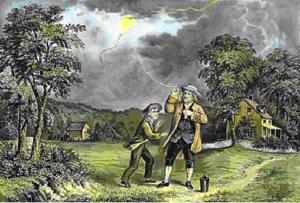Capacitors
Function
Capacitors store electric charge. They are used with resistors in
timing circuits
because it takes time for a capacitor to fill with charge. They are used to
smooth varying DC supplies by acting as a reservoir
of charge. They are also used in filter circuits because capacitors easily pass AC (changing)
signals but they block DC (constant) signals.
Capacitance
This is a measure of a capacitor's ability to store charge.
A large capacitance means that more charge can be stored.
Capacitance is measured in farads, symbol F.
However 1F is very large, so prefixes are used to show the smaller values.
Three prefixes (multipliers) are used, µ (micro), n (nano) and p (pico):
- µ means 10-6 (millionth), so 1000000µF = 1F
- n means 10-9 (thousand-millionth), so 1000nF = 1µF
- p means 10-12 (million-millionth), so 1000pF = 1nF
Capacitor values can be very difficult to find because there are many types of capacitor
with different labelling systems!
There are many types of capacitor but they can be split into two groups,
polarised and unpolarised.
Each group has its own circuit symbol.
Polarised capacitors (large values, 1µF +)
Examples:

Circuit symbol:

Electrolytic Capacitors
Electrolytic capacitors are polarised and
they must be connected the correct way round,
at least one of their leads will be marked + or -.
They are not damaged by heat when soldering.
There are two designs of electrolytic capacitors;
axial where the leads are attached
to each end (220µF in picture) and
radial where both leads are at the same end
(10µF in picture). Radial capacitors tend to be a little smaller
and they stand upright on the circuit board.
It is easy to find the value of electrolytic capacitors because they are clearly printed
with their capacitance and voltage rating. The voltage rating can be quite low (6V for example)
and it should always be checked when selecting an electrolytic capacitor. If the project
parts list does not specify a voltage, choose a capacitor with a rating which is greater
than the project's power supply voltage. 25V is a sensible minimum for most battery circuits.
Tantalum Bead Capacitors
Tantalum bead capacitors are polarised and have low voltage ratings like electrolytic capacitors.
They are expensive but very small, so they are used where a large capacitance is needed in a small size.
Modern tantalum bead capacitors are printed with their capacitance, voltage and polarity in full.
However older ones use a colour-code system which has two stripes (for the two digits) and a spot
of colour for the number of zeros to give the value in µF.
The standard
colour code is used, but for the spot,
grey is used
to mean × 0.01 and
white means × 0.1 so that values of less than
10µF can be shown. A third colour stripe near the leads shows the voltage (yellow 6.3V, black 10V,
green 16V, blue 20V, grey 25V, white 30V, pink 35V). The positive (+) lead is to the right when the
spot is facing you: '
when the spot is in sight, the positive is to the right'.

For example:
blue, grey, black spot means 68µF
For example:
blue, grey, white spot means 6.8µF
For example:
blue, grey, grey spot means 0.68µF
Unpolarised capacitors (small values, up to 1µF)
Examples:

Circuit symbol:

Small value capacitors are unpolarised and may be connected either way round.
They are not damaged by heat when soldering, except for one unusual type (polystyrene).
They have high voltage ratings of at least 50V, usually 250V or so.
It can be difficult to find the values of these small capacitors because there are many
types of them and several different labelling systems!

Many small value capacitors have their value printed but without a multiplier, so you need to
use experience to work out what the multiplier should be!
For example
0.1 means 0.1µF = 100nF.
Sometimes the multiplier is used in place of the decimal point:
For example:
4n7 means 4.7nF.
Capacitor Number Code
A number code is often used on small capacitors where printing is difficult:

- the 1st number is the 1st digit,
- the 2nd number is the 2nd digit,
- the 3rd number is the number of zeros to give the capacitance in pF.
- Ignore any letters - they just indicate tolerance and voltage rating.
For example:
102 means 1000pF = 1nF
(not 102pF!)
For example:
472J means 4700pF = 4.7nF (J means 5% tolerance).
|
Colour Code
|
| Colour | Number |
| Black |
0
|
| Brown |
1
|
| Red |
2
|
| Orange |
3
|
| Yellow |
4
|
| Green |
5
|
| Blue |
6
|
| Violet |
7
|
| Grey |
8
|
| White |
9
|
Capacitor Colour Code
A colour code was used on polyester capacitors for many years.
It is now obsolete, but of course there are many still around.
The colours should be read like the resistor code, the top three colour
bands giving the value in pF. Ignore the 4th band (tolerance) and 5th band
(voltage rating).

For example:
brown, black, orange means 10000pF = 10nF = 0.01µF.
Note that there are no gaps between the colour bands, so 2 identical bands
actually appear as a wide band.
For example:
wide red, yellow means 220nF = 0.22µF.
Polystyrene Capacitors

This type is rarely used now. Their value (in pF) is normally printed without units.
Polystyrene capacitors can be damaged by heat when soldering (it melts the polystyrene!)
so you should use a heat sink (such as a crocodile clip). Clip the heat sink to the lead
between the capacitor and the joint.
Real capacitor values (the E3 and E6 series)
You may have noticed that capacitors are not available with every possible value,
for example 22µF and 47µF are readily available, but 25µF
and 50µF are not!
Why is this? Imagine that you decided to make capacitors every 10µF giving
10, 20, 30, 40, 50 and so on. That seems fine, but what happens when you reach 1000?
It would be pointless to make 1000, 1010, 1020, 1030 and so on because for these values
10 is a very small difference, too small to be noticeable in most circuits and capacitors
cannot be made with that accuracy.
To produce a sensible range of capacitor values you need to increase the size of the 'step'
as the value increases. The standard capacitor values are based on this idea and they form
a series which follows the same pattern for every multiple of ten.
The E3 series (3 values for each multiple of ten)
10, 22, 47, ... then it continues 100, 220, 470, 1000, 2200, 4700, 10000 etc.
Notice how the step size increases as the value increases (values roughly double each time).
The E6 series (6 values for each multiple of ten)
10, 15, 22, 33, 47, 68, ... then it continues 100, 150, 220, 330, 470, 680, 1000 etc.
Notice how this is the E3 series with an extra value in the gaps.
The E3 series is the one most frequently used for capacitors because many types cannot
be made with very accurate values.
Variable capacitors
Variable capacitors are mostly used in radio tuning circuits and they are
sometimes called 'tuning capacitors'.
They have very small capacitance values, typically between 100pF and 500pF
(100pF = 0.0001µF).
The type illustrated usually has trimmers built in (for making small adjustments - see below)
as well as the main variable capacitor.
Many variable capacitors have very short spindles which are not suitable for
the standard knobs used for variable resistors and rotary switches. It would be wise
to check that a suitable knob is available before ordering a variable capacitor.
Variable capacitors are
not normally used in timing circuits because their
capacitance is too small to be practical and the range of values available is very
limited. Instead timing circuits use a fixed capacitor and a variable resistor if
it is necessary to vary the time period.
Trimmer capacitors
Trimmer capacitors (trimmers) are miniature variable capacitors.
They are designed to be mounted directly onto the circuit board and adjusted only when
the circuit is built.
A small screwdriver or similar tool is required to adjust trimmers.
The process of adjusting them requires patience because the presence of your hand and
the tool will slightly change the capacitance of the circuit in the region of the trimmer!
Trimmer capacitors are only available with very small capacitances, normally less
than 100pF. It is impossible to reduce their capacitance to zero, so they are usually
specified by their minimum and maximum values, for example 2-10pF.
Trimmers are the capacitor equivalent of
presets
which are miniature variable resistors.
source : www.kpsec.freeuk.com
 Benjamin Franklin is known as the first person who discovered electricity. Benjamin was born in 1705, he began studying electricity at the beginning of the year 1750an. He was doing research one with kite experiment to prove the existence of a natural power. In 1752 he did experiment by placing a sharp metal tip on the end of a kite string locks fitted.
Benjamin Franklin is known as the first person who discovered electricity. Benjamin was born in 1705, he began studying electricity at the beginning of the year 1750an. He was doing research one with kite experiment to prove the existence of a natural power. In 1752 he did experiment by placing a sharp metal tip on the end of a kite string locks fitted. Circuit symbol:
Circuit symbol: 

 Circuit symbol:
Circuit symbol:  Small value capacitors are unpolarised and may be connected either way round.
They are not damaged by heat when soldering, except for one unusual type (polystyrene).
They have high voltage ratings of at least 50V, usually 250V or so.
It can be difficult to find the values of these small capacitors because there are many
types of them and several different labelling systems!
Small value capacitors are unpolarised and may be connected either way round.
They are not damaged by heat when soldering, except for one unusual type (polystyrene).
They have high voltage ratings of at least 50V, usually 250V or so.
It can be difficult to find the values of these small capacitors because there are many
types of them and several different labelling systems!
 Many small value capacitors have their value printed but without a multiplier, so you need to
use experience to work out what the multiplier should be!
Many small value capacitors have their value printed but without a multiplier, so you need to
use experience to work out what the multiplier should be!
 For example:
For example:




